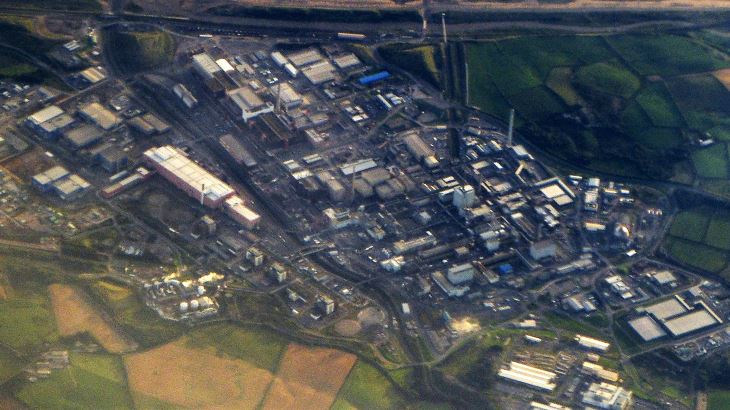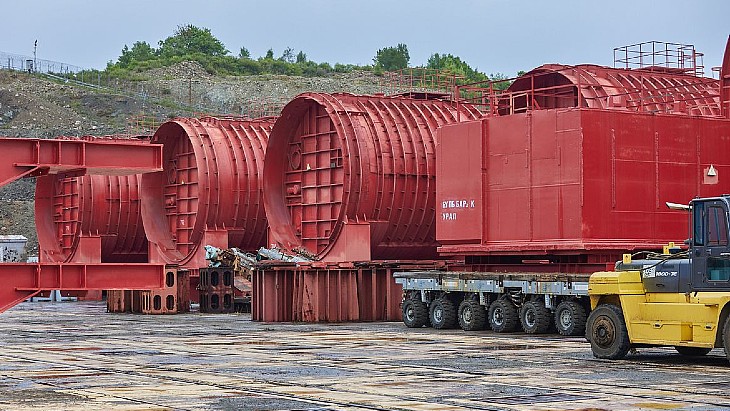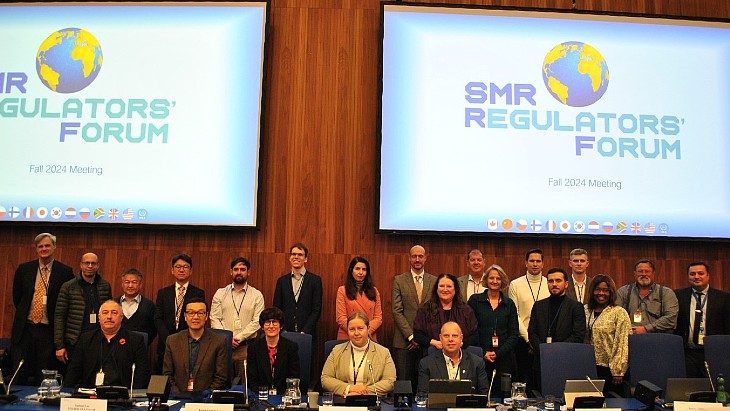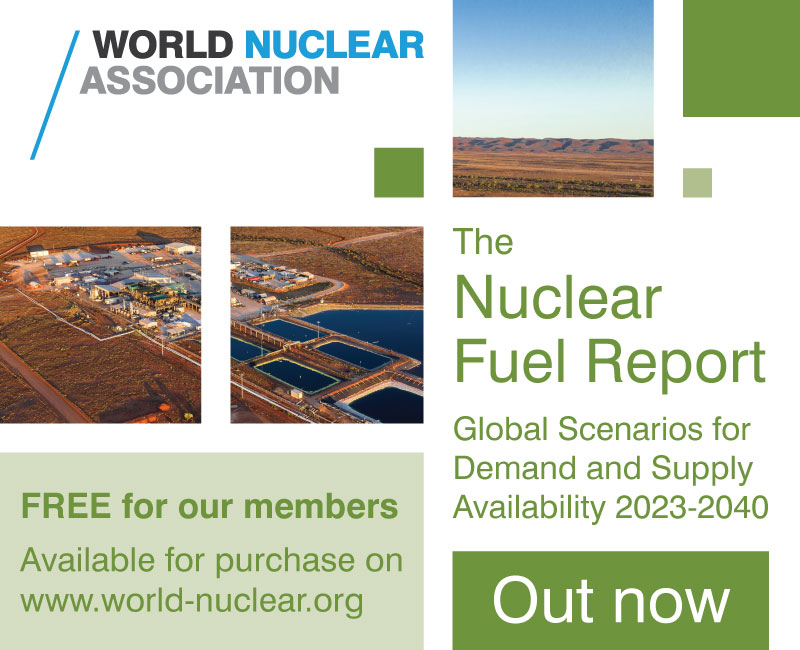UK audit office sees progress at Sellafield

The NAO scrutinises public spending for Parliament and is independent of government. The NDA is an executive non-departmental public body sponsored by the Department for Business, Energy & Industrial Strategy (BEIS). The NAO report, 'The Nuclear Decommissioning Authority: progress with reducing risk at Sellafield', is an update to its previous report in 2015.
It says: "In recent years, Sellafield Limited has met significant milestones in retrieving hazardous waste from its legacy ponds and silos. While delays and cost overruns are still evident for major projects at Sellafield, the NDA has made progress with reducing these since we last reported. However, the Department for Business, Energy & Industrial Strategy, UK Government Investments, the NDA and Sellafield Limited have more work to do to measure, evaluate and communicate progress more effectively," the report says.
To sustain progress in the near term, the NDA and central government will need to clarify the NDA's role, the report adds, and to "find the right balance between scrutinising decisions and enabling the leadership at Sellafield to exercise its legal duties, professional expertise and maintain motivation".
To inform its longer-term strategy, the NDA must review the constraints that it says prevent further and faster progress with reducing high hazard at Sellafield, the report adds.
The NDA is responsible for operating, decommissioning and cleaning up 17 nuclear reactor and research sites in the UK. Its work includes reprocessing used fuel from old nuclear reactors, managing and storing nuclear materials, removing and managing contaminated waste, and decontaminating and dismantling legacy facilities. The NDA estimates that this work will be completed by 2120, at a cost of GBP121 billion (USD160 billion), but these estimates "remain highly uncertain", the NAO says.
Sellafield accounted for 61% of the NDA's total spend of GBP3.3 billion in 2017-18. "We have previously reported on the NDA's progress with reducing risk and hazard on the Sellafield site and found that the NDA had struggled to understand the full extent of the work necessary to clean up its most hazardous facilities," the NAO says.
Three areas
The report examines three areas: the NDA's role, its governance, and the complex challenges it faces in delivering its long-term mission; progress with reducing high hazard and risk at Sellafield, and limitations to faster progress; and the NDA and Sellafield Limited's plans to ensure sustainable progress at Sellafield.
Eight of the ten most hazardous facilities on the NDA estate are at Sellafield. Of the GBP121 billion estimated undiscounted total cost of the NDA's clean-up mission up to 2120, Sellafield accounts for GBP91 billion.
There has been a 70% reduction in radioactive content in the pile fuel storage pond after Sellafield Limited completed the removal of nuclear fuel from the pond in March 2016, the NAO notes.
There are 14 major projects at Sellafield with expected lifetime costs of more than GBP100 million each or that are "novel or contentious", it says. The total expected spend on major projects currently in design or under construction at Sellafield is GBP6 billion, of which GBP483 million will have been spent in 2017-18.
There has been some GBP586 million in "sunk costs" of three major projects cancelled at Sellafield since 2012 after the NDA says it found more cost-effective strategies.
In January 2015, the NDA announced the termination of its contract with the private sector consortium that managed Sellafield Limited, a decision approved by the then Department of Energy & Climate Change and HM Treasury. As of April 2016, Sellafield Limited became a wholly owned subsidiary of the NDA.
In 2012, the NAO found that the NDA's portfolio of the 14 major projects at Sellafield was not providing good value for money, with significant lifetime cost increases and delays. In 2013, it concluded that the NDA's assurance of reported efficiency savings at Sellafield was "moderate", in 2015, it reported that costs and delays of major projects at Sellafield had escalated further, and last year it reported on the NDA's "failed procurement and management" of its contract to decommission 12 Magnox sites.
The NAO called into question the NDA's ability to manage large procurements in its report on the 'Magnox contract', issued in October last year. The NAO assessed the competitive procurement exercise for services to decommission two nuclear research sites and ten Magnox sites that the NDA ran between 2012 and 2014.
Recommendations
The NAO says that BEIS should carry out a tailored review of the NDA, including its role, function and governance arrangements, in line with Cabinet Office guidelines. It should use the findings of the Committee of Public Accounts' February 2018 report, alongside those of the independent inquiry into the failed Magnox contract, to clarify the respective roles and responsibilities of the NDA and Sellafield Limited (and the other site licence companies). It should also streamline the governance and oversight of the NDA to clarify the roles and value added by each body, and ensure the right capabilities, management information systems and approvals processes are in place to support, challenge and assess the NDA's performance, the NAO says.
On performance reporting and assurance, it says the NDA should review whether the current lifetime plan for Sellafield remains good enough to monitor performance and assess efficiencies after the change to the Sellafield management model. It should "review and strengthen its assurance arrangements", including its assurance of efficiency savings reported by Sellafield Limited, with a focus on capability in both the NDA and Sellafield Limited to discharge assurance functions effectively. In addition, BEIS should ensure that NDA's management information provides both programme and project-level data to enable it to evaluate its performance in the medium term (three to five years).
"This information for each layer from Sellafield Limited to the Department should be clearly linked to the responsibilities of each layer and avoid duplication," it says.
To help sustain improvements at Sellafield, the NDA should, with the support of Sellafield Limited, invest in "understanding the drivers of project improvements" at Sellafield to ascertain which have been most effective and replicable; and test the "perceived constraints to faster and further progress" at Sellafield and use these findings to inform or revise its strategy for decommissioning Sellafield.
To support a more transparent approach to reporting on progress and decision-making, the NDA should complete its work on mission reporting to enable it to give a transparent account of its progress on areas of the work that are more certain; and work with Sellafield Limited and HM Treasury to evaluate and report the full costs associated with changes it has made to strategies and projects it has deferred, making clear how short- and long-term costs have been taken into account.
_17992.jpg)
_75800.jpg)











